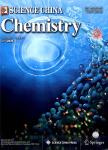Organic thin-film solar cells:Devices and materials
Organic thin-film solar cells:Devices and materials作者机构:Jiangsu Engineering Centre for Flat-Panel Displays & Solid-state Lighting and School of Materials Science & Engineering Nanjing University of Posts & Telecommunications Nanjing China Key Laboratory for Organic Electronics & Information Displays (KLOEID) Institute of Advanced Materials (IAM) Nanjing University of Posts & Telecommunications Nanjing China
出 版 物:《Science China Chemistry》 (中国科学(化学英文版))
年 卷 期:2012年第55卷第4期
页 面:553-578页
核心收录:
学科分类:08[工学] 080502[工学-材料学] 0805[工学-材料科学与工程(可授工学、理学学位)]
基 金:supported by the National Natural Science Foundation of China (20974046, 61077021 & 61076016) New Century Excellent Talents funding from Ministry of Education of China (NCET-08-0697) National Basic Research Program of China (973 Program, 2009CB930600)
主 题:organic – solar cell – photovoltaic – devices – materials
摘 要:In recent years, the performance of organic thinfilm solar cells has gained rapid progress, of which the power conversion efficiencies (r/p) of 3%-5% are commonly achieved, which were difficult to obtain years ago and are improving steadily now. The r/p of 7.4% was achieved in the year 2010, and r/p of 9.2% was disclosed and confirmed at website of Mitsubishi Chemical in April, 2011. The promising future is that the r/p of 10% is achievable according to simulation results. Apparently, these are attributed to material innovations, new device structures, and also the better understanding of device physics. This article summarizes recent progress in organic thinfilm solar cells related to materials, device structures and working principles. In the device functioning part, after each brief summary of the working principle, the methods for improvements, such as absorption increment, organic/electrode interface engineering, morphological issues, are addressed and summarized accordingly. In addition, for the purpose of increasing exciton diffusion efficiency, the benefit from triplet exciton, which has been proposed in recent years, is highlighted. In the active material parts, the chemical nature of materials and its impact on device performance are discussed. Particularly, emphasis is given toward the insight for better understanding device physics as well as improvements in device performance either by development of new materials or by new device architecture.



